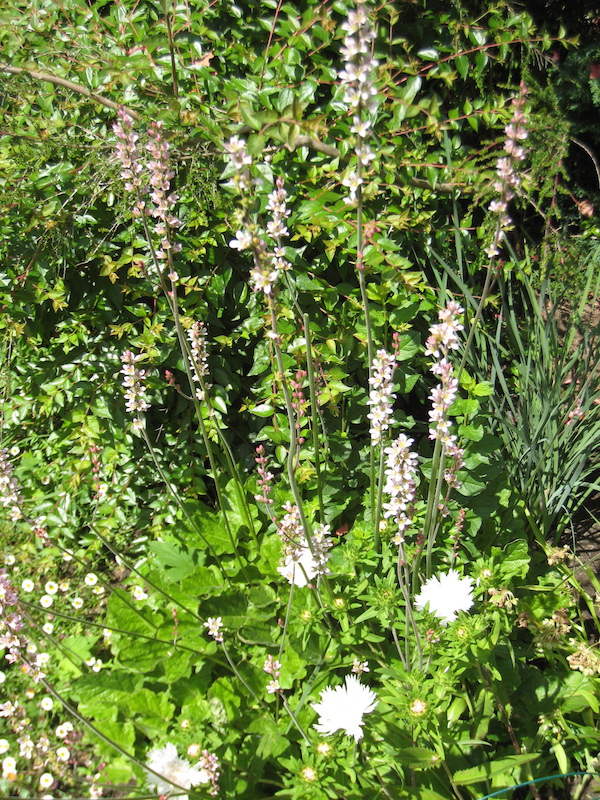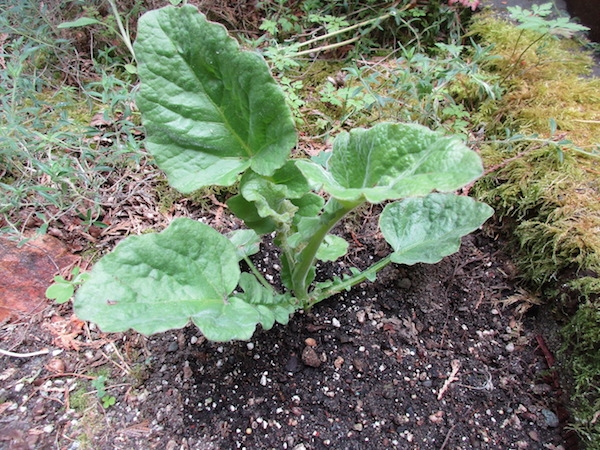| Francoa is a variable species, a Chilean, herbaceous tufted perennial with fuzzy foliage and slender spikes 2 to 4 feet high of charming small white to pink or red 4-petalled flowers in summer. The lyre-shaped leaves recall in outline those of certain common weedy, edible Sonchus species in the sunflower family, but are floppy, astringent and hairy rather than bitter and scarcely hairy or hairless. |
| Francoa is planted in gardens often, and was used as a houseplant mainly in the UK in the 1800s and early 1900s. Regardless where grown, it needs coolness rather than heat, and tolerates some freezing. Its foliage can be evergreen in mild winters. It can flower in June or July or may wait until fall to bloom. Cultivars exist, some with flowers almost magenta. It is not reported edible, but I expect the leaves boiled would make a wholesome vegetable, so will try that dish eventually. |
| Another English name is Chilean Saxifrage, and if one uses a broad or lumping persperctive, Francoa is in the saxifrage family: SAXIFRAGACEÆ. |
| The name Bridal Wreath was "given to the plant owing to the pretty custom following in many cottage windows of tying the long, graceful spikes of flowers to an arched wire or willow wand, when they truly represent what their popular name proclaims them to be." (1906 ; E.J. Kingshome) |
Specimens with pure with flowers are called Maiden's Wreath or Snow Wreath.
Back |

Francoa sonchifolia blooming in July with Stokesia lævis 'Silver Moon'; photo by ALJ
|

Francoa sonchifolia a young plant ; photo by ALJ
|

